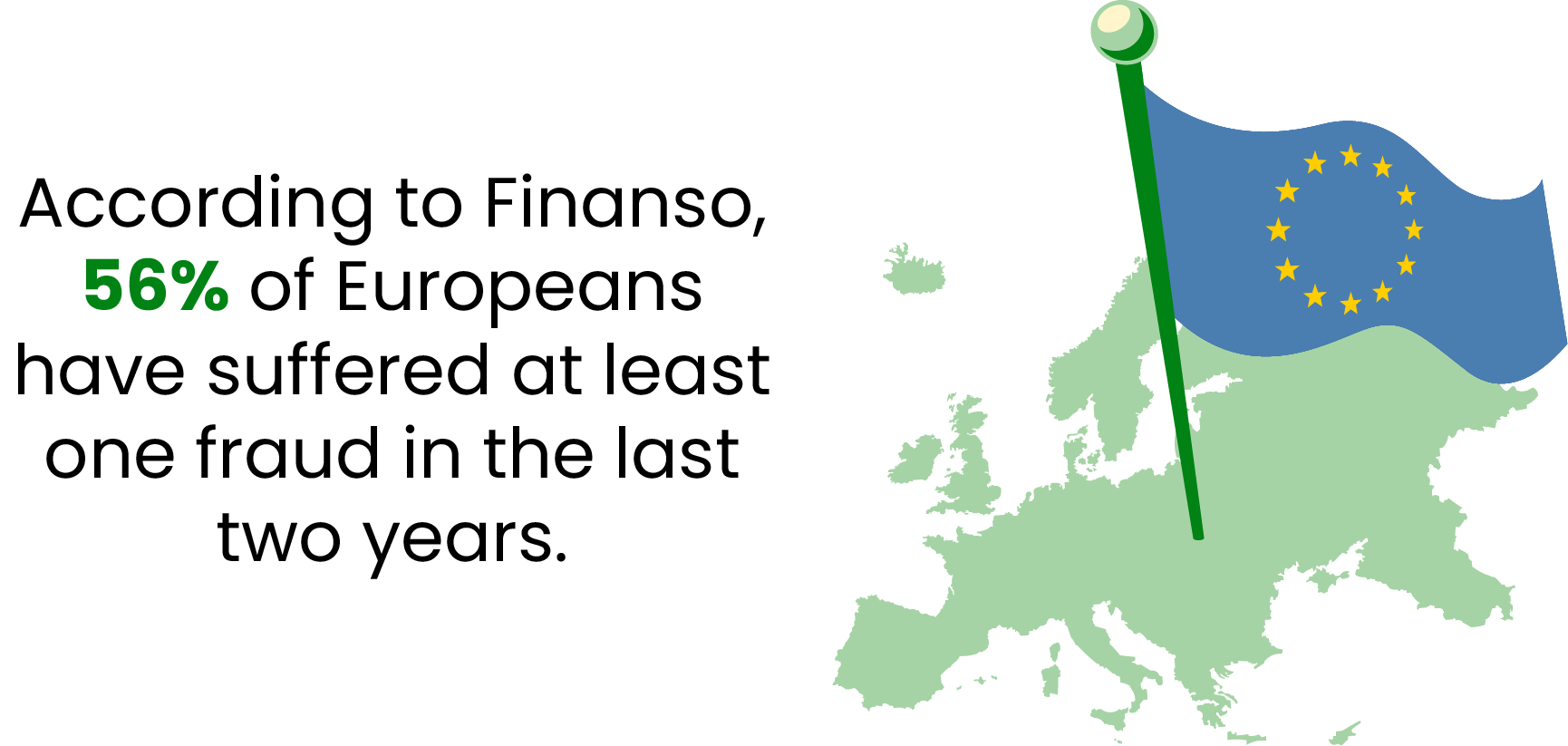2023 Identity Theft Statistics - Who Are the Victims?

Identity theft has become a big concern for people worldwide, not just in the U.S. This issue has been widespread for years, but its frequency has skyrocketed recently — in large part due to advancements in technology.
Even as 2022 numbers are still continuing to rise, the identity theft statistics are already very concerning. Let's quickly review some statistics showing why identity theft is becoming a big issue in and outside the U.S.
Key Takeaways
- As of June 2022, statistics show 2.4 million total cases, including victims of fraud, identity theft, and other reports.
- The first quarter of 2022 recorded about 1.237 million reports, followed by 1.132 million in the second quarter.
- Identity theft was the most reported issue in 2021 (25% of all reports).
- Government Documents or Benefits Fraud reached number one on the list of identity theft types reported in 2021.
- In 2022, identity theft reports accounted for 0.6 million incidents: 314,000 in the first quarter, followed by 289,000 in the second quarter.
- Identity theft mainly affects people between the ages of 30-39.
- Credit card fraud tops the 2022 list with 230,937 reports.
Recent Identity Theft Facts & Statistics
Identity theft was the most reported issue in 2021 (25% of all reports) to the Consumer Sentinel Network, surpassing all other types of complaints. Consumers reported 984,756 instances of imposter scams in 2021, making up 17.2% of total fraud reports.
Victims of fraud, identity theft, and other reports each year
The number of reported cases of fraud, identity theft, and other reports has significantly increased since 2018. Data shows a number of 3.2 million total reports for 2018, including all cases. The number went up by 2 million in 2019 and shot up in 2021 with 5.9 million cases.
So far, the situation hasn't changed much; statistics show 2.4 million total cases reported in 2022. More specifically, the first quarter recorded about 1.237 million reports, followed by 1.132 million in the second quarter.
33% of Americans have experienced identity theft of some kind at some point of their lives
The U.S. experiences roughly three times as many identity theft incidents compared to other countries. According to reports, nearly 33% of Americans have been victims of identity theft attempts at some point in their lives. Experts believe this figure may rise sharply over the years.
Data reveals that mainly men are behind these types of crimes
A report from the United States Sentencing Commission said that 75.1% of identity theft crimes are committed by men, with an average age of 34. Of those who were convicted, the racial breakdown was 38.7% Black, 31.7% Hispanic, 24.2% white, and 5.3% other races.
Identity Theft Reports in 2022
Data as of June 2022 shows that in comparison to last year's first quarter, identity theft reports declined in the first quarter of 2022. So far, it has reached only 0.6 million reports: 314,000 in the first quarter, followed by 289,000 in the second quarter.
Identity theft by age
This phenomenon has mainly affected people in the 30-39 age bracket. They make up 30% (153,407) of the total. Second is people ages 40-49, who comprise 22% of all reports.
On the other end of the spectrum, teenagers make up only 2% of the reports. They are followed by those ages 80 and over with 1% of the reported cases.
Adults are not the only ones who fall victim to identity theft — children under the age of 18 can become victims too
Child identity theft costs American families approximately $1 billion each year. It affects one out of every 50 children and takes a long time for parents and guardians to resolve.
Identity Theft Statistics By State
Although no state is immune, certain states have higher rates of identity theft than others. Below, you will see which states have the most problems with identity theft.
The Most Common Types of Identity Theft in 2022
If unchecked, identity theft could negatively affect credit reports and scores, making it more challenging to achieve financial objectives. Therefore, it's essential to know different forms of identity theft and stay alert, especially as numbers continue to rise.
Government documents or benefits fraud comes last on the list of the most common types of identity theft in 2022
Government documents or benefits fraud topped the list of identity theft cases reported in 2021. The FTC received 395,948 reports from people who claimed their personal information had been misused. However, the first and second quarters of 2022 have recorded only 34,940 cases.
Credit card fraud tops the 2022 list with 230,937 reports
Credit card fraud is a type of identity theft involving the unauthorized use of another person's credit card information to charge purchases or withdraw money from the account.
The first quarter alone has recorded 118,238 reports, an increase of 23,523 compared to last year's first quarter. Another 111,699 cases were reported in the second quarter.
Americans are at risk because they're careless when shopping online
According to data, 24% of identity theft victims in the United States admitted the crime occurred after shopping online around the holidays. Shopping from home increased during the pandemic, leading to more cases of online fraud and scams in 2020 and 2021.
Despite this, only 58% of respondents said they would not utilize public wifi networks for shopping in the future.
America’s cost of identity theft
Consumers reported losing more than $5.8 billion to fraud in 2021, up more than 70% from 2020, according to the recently released Federal Trade Commission data.
European Statistics on Identity Theft
This invisible crime is equally common in European countries, where sophisticated scams target an increasing number of people each year, offline and online.
According to Finanso, 56% of Europeans have suffered at least one fraud in the last two years. One-third of them were victims of identity theft, making it the second most common sort of fraud in Europe.

Online attacks top the list of methods used for unauthorized identity access
An email was used in roughly half of all identity theft attacks in European countries. Another 39% of attacks used phones. Online ads, text messaging, and social media platforms come in at 5%, 4%, and 3%, respectively.
The United Kingdom has the highest rate of identity theft
According to the figures, the UK is the most vulnerable, with 53% of respondents experiencing this fraud. Ireland comes in second place with a 50% share, followed by Denmark, the Netherlands, and France with 45%, 42%, and 39%, respectively.
Scams and frauds caused a €24bn loss in two years
According to data, 25% of Europeans exposed to fraud incurred financial harm, resulting in a total loss of roughly €24 billion in two years.
How to Prevent Identity Theft
Although scammers are becoming more skilled, requiring less information for successful identity fraud, you may make their job more complex and protect yourself by using the following best practices:
The Bottom Line
Although identity theft is not a new crime, the topic has taken on new and alarming significance as the use of social media, remote learning, and digital commerce increase.
Identity theft has been a rising global concern in recent years. Victims are finding it challenging to deal with these issues as theft methods get more sophisticated. The statistics are worrisome because the number of these crimes is not decreasing. In addition, not all cases are reported, which causes more challenges in identifying crimes.
